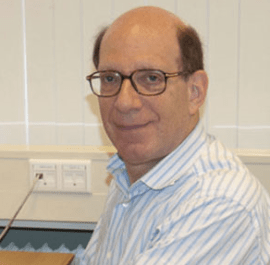‘Few people will be voting for anyone, but a lot of people will be voting against someone.’
Interview with upcoming guests Timothy Prescott and Andy Tanenbaum

 Big Data and social media are playing an increasingly significant role in the electoral process, from projections on outcome to helping candidates understand where they should best focus their campaign attention. Guest speakers Timothy Prescott and Andy Tanenbaum will give a talk about data and elections, each coming from their differing areas of expertise. We asked for a bit of background.
Big Data and social media are playing an increasingly significant role in the electoral process, from projections on outcome to helping candidates understand where they should best focus their campaign attention. Guest speakers Timothy Prescott and Andy Tanenbaum will give a talk about data and elections, each coming from their differing areas of expertise. We asked for a bit of background.
What type of data do you think is most interesting to consider when looking at projections of the upcoming election?
Timothy Prescott: For us, as outsiders, the most interesting is aggregated polling in swing-states. It’s all about FL, OH, PA, NC, etc…For the campaigns, it’s (also) about individual-level outreach results. You want to find out: “Are you talking to the right people? What is the effect of those conversations?”, etc. In the end, elections are about building lists… All you need to do is make sure your list is longer than the list of your opponent.
Andy Tanenbaum: The fundamental data is how the candidates are doing in each of the
states. National polls don’t mean a whole lot. Also important are the approve/disapprove ratings of the candidates. They don’t change a lot.
Andy, what does that actually mean in terms of data, ‘how the candidates are doing’? What are the metrics that are reliable, in terms of comparing theoretical success to actual success?
AT: Approve/disapprove is one of the better metrics. Candidate “likeability”appears to be important. Candidates who people disapprove of have a tough time, unless their opponents are worse.
Timothy, what limitations do you see for data analysis, when it comes to politics?
TP: First, analytics allows you to optimize your outreach, which helps in the margins. And elections often are decided within those margins – the elections of 2000 and 2004 are examples of that. For example, in 2012, the Obama campaign won Florida by a margin smaller than the number of people we registered to vote. This is where analytics makes the difference. But analytics can’t turn a badly losing candidate into a winning one.
Second, data analysis won’t give you the million-dollar idea, for example when it comes to messaging or ads. But it does allow you to measure if your idea is that million-dollar one, or not.
Andy, how do you make sure the data you use is solid?
AT: There are endless problems with polling, starting with getting a true random sample in an era when many people don’t have landlines and 90% ofthe people called refuse to answer questions. There are also problems with people lying. It is known that Donald Trump polls much better in polls done by a computer than in polls in which a live human being asks
the questions.
Is this a challenge that can be somehow overcome?
AT: The whole basis of statistical sample assumes a random sample. If you can’t get that, you’re toast. There may be other ways to get it besides random digit dialing, but you need a random sample of people who are going to vote.
At what point does “data” become sufficiently “big data” that it’s useful for drawing conclusions?
AT: The margin of error can be easily calculated from the sample size. A poll of 2,000 people is more than enough for polling. Big data is about having information on every single voter and approaching the voter based on what is known. It is a completely different issue.
TP: This really depends on the conclusions you are trying to reach and how important accuracy is.
Timothy, why have you turned your data analyzing attention to politics?
TP: As a person I place high importance on individual rights – which also means society should be fair. Within that context, the direct trigger for me to get involved in the Obama campaign in 2007 was the war in Iraq, and a belief Barack can be trusted when making tough decisions.
Andy, what’s your motivation? Is there a link between your background in open source and politics?
AT: I have been involved in politics for many years, going back to the 1960s. To the extent that there is a connection between data and open source it is that I publish all my political data so others can verify and use it.
What does the data say so far for the current election?
TP: This is Clinton’s race to lose– electorate fundamentals are in Clinton’s favor. Trump needs to realize significant shifts vs. state-by-state outcomes in 2012, and has to do so against high negatives around his candidacy – all of this without having a strong organization to raise funds, build a platform, and mobilize voters.
AT: According to data, we have two extraordinarily unpopular candidates. The vast majority of the country dislikes one or both of them. Few people will be voting for anyone, but a lot of people will be voting against someone.

Katherine Oktober Matthews
Buy tickets for Prescott’s and Tanenbaum’s talk on May 26, 2016 at 8:00 pm, at Pakhuis de Zwijger at https://www.john-adams.nl/big-data-how-data-will-determine-the-next-president/
Katherine Oktober Matthews is an American artist based in Amsterdam. She is the Chief Editor of GUP Magazine. For the John Adams Institute she interviews upcoming speakers. See more of her work at oktobernight.com.
